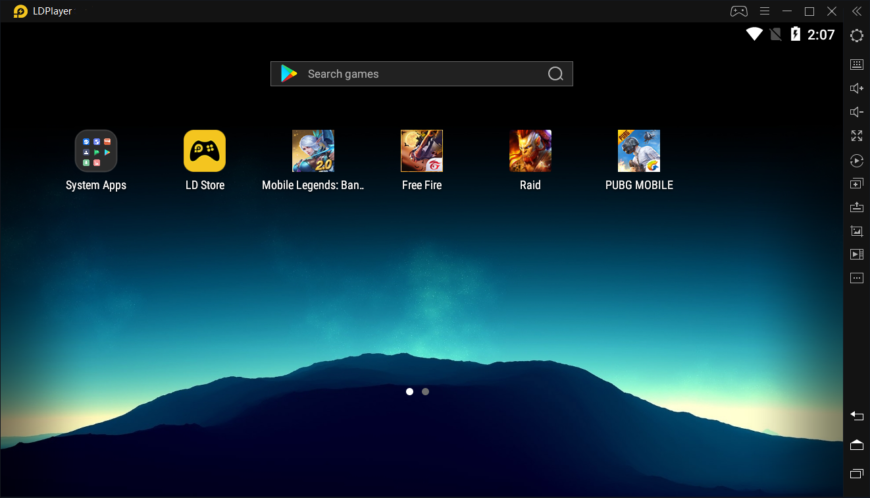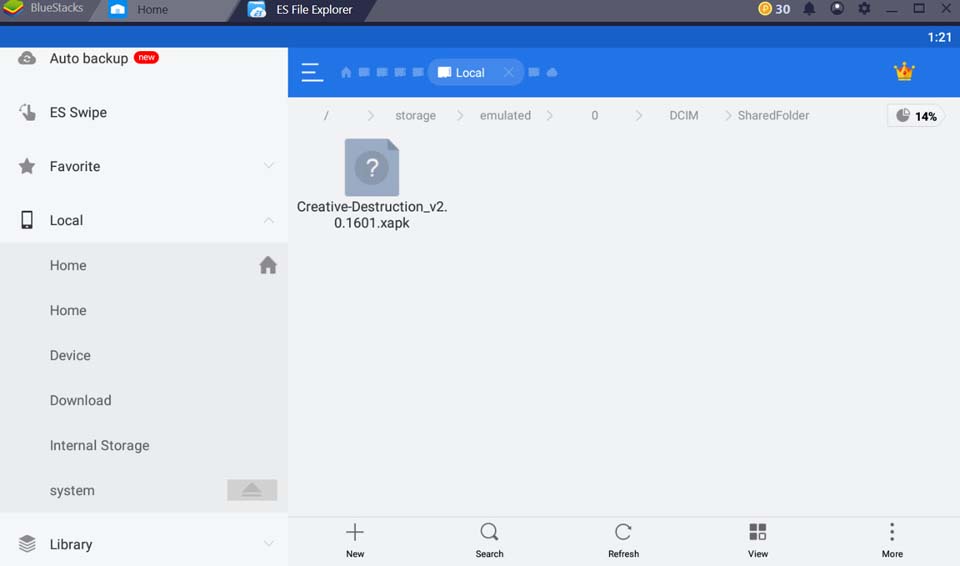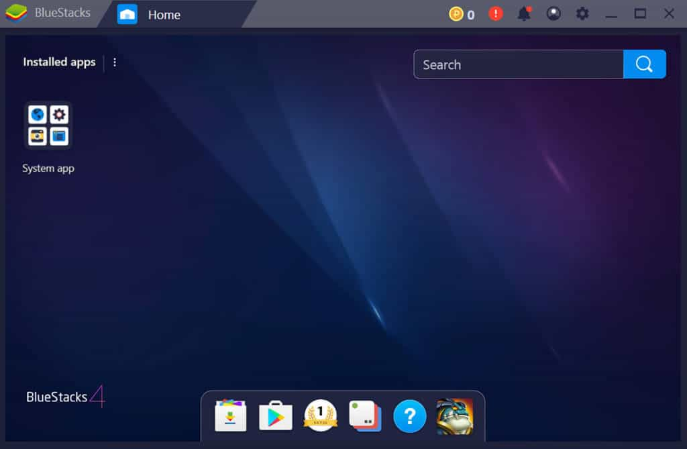BlueStacks App Player is an easy-to-use program that you can use to run Android apps on your PC. This program creates a virtual device that you can easily manage from its main menu, as well as quickly download and install a variety of apps as if you were working on a real Android device. LDPLAYER = Stable, smoother animations,not as fast as bluestacks but not likely to have graphical bugs NOX = Horrible, very slow and laggy BLUESTACKS = Fast, connects fast however graphical bugs 7.
Last Updated on October 22, 2020 by
Emulators like Bluestacks, NoxPlayer and MEmu Player were the early adaptors in Android simulation for Windows users but lately LDPlayer has gained immense popularity right after its launch. If you want to play high resolution games on your PC, LDPlayer is a perfect Android emulator for you.
Launched in 2018, it now supports over 1 million games and that’s staggering. Moreover, it now has more than 2 Million+ daily active users which speak volumes about the emulator. And if you’re looking forward to download LDPlayer, you could be one of them too. But before that, you need to know the features of the emulator so that you can use it in a way you want.
Features of LDPlayer
Have a glimpse at the features of LDPlayer and you’re all good to go!
#1. Custom Controls!
When it comes to playing Mobile games on PC, keyboard and mouse controls have always been an issue with many of the emulators. But over the time all Android emulators have got that issue solved. So did LDPlayer right from the start by offering custom controls to the users playing any game on the emulator. It’s now a lot easier to play games with customized keyboard and mouse controls.
#2. Multi-Instance Mode!
Playing various games at the same time is not something you can do on your Android smartphones and tablets but with an Android emulator like LDPlayer, it’s possible. Just open the Multi-instance option in the emulator and add the games that you want to play. Launch the games and you’re all set to play various games at one shot with LDPlayer.
#3. Automated Scripts!
Isn’t it amazing to automate your gaming stuff just with a few clicks? Well, LDPlayer lets you automate your gaming and you will enjoy this feature the most. With the help of Macros, you can automate certain things in the game you play. Of course, you need to create custom macros every time you play a new game. And all this can be done by using the Option Recorder feature in the emulator. If you’re new to this feature, you can check out this detailed guide to know how to set up macros/scripts to automate things in your favorite games.
#4. High FPS!
If you love playing games that involve a lot of graphics, then this feature is just made for you. LDPlayer can let you play games with more than 60 FPS without any lags and optimization issues. But if you’re facing any lags or speed issues, you must check this before you set high FPS for any game in the emulator.
#5. Supports Intel & AMD Computers!
Not all Android emulators are capable of supporting both Intel and AMD powered systems. LDPlayer has got 2 versions which runs on Android 7.1 and Android 5.1 and both of these versions are capable of running smoothly on Intel and AMD computers.
These were some of the finest features of the LDPlayer Android emulator. Let’s now look into the installation process for the same.
How to Download LDPlayer on Windows PC & Laptop
Follow this simple process to download and install LDPlayer on your Windows computer. Here you go!
Step #1.
LDPlayer is available in two versions. LDPlayer 4 runs on Android 7.1 and LDPlayer 3 runs on Android 5.1. So depending on your preferred choice, you can download any one of these versions.
Step #2.
Ld Player Bluestacks
Now launch the downloaded file and click on Install once it appears on your screen. The file size would be around 420 MB and it would take some time to install the emulator on your Windows PC.
We’ve noticed that LDPlayer gets installed quickly as compared to Bluestacks, NoxPlayer and MEmu Player.
Step #3.
Click on Start once the installation is completed.
Step #4.
Now, it’s time to install your favorite games on your PC using LDPlayer. Simply click on the LD Store option or use the Search box on the top as shown to find your favorite games.
Step #5.
Search for any game and click on the Install option. It will now ask you to sign in using your Google account. Click on the Sign in option and enter your login credentials to proceed further.
Step #6.
Once you sign in with your Google account, the games can now be installed on your PC without any hassles.
This completes the installation process of LDPlayer on Windows. Let us know in the comments if you face any issues while downloading or installing the emulator. We will try to solve your issues at the earliest.
Before you leave, have a glimpse at the minimum and recommended system requirements of LDPlayer.
Minimum System Requirements of LDPlayer Emulator
Operating System: Microsoft’s Windows XP, 7, 8, 10 (32 or 64-bit)
Processor: Intel or AMD CPU Processor x86 / x86_64
RAM: 2GB of RAM
Hard Disk Drive: Minimum 36GB Free Space.
Recommended System Requirements to run LDPlayer Smoothly!
If you want to play your favorite action or arcade games using LDPlayer without any lags, make sure your Windows computer meets these recommended system requirements.
Operating System: Microsoft’s Windows 10 with virtualization technology enabled
Processor: Intel i5 7500 or above.
RAM: 8GB or higher
Hard Disk Drive: 100GB of free hard disk space.
Closing Thoughts!
LDPlayer is one of the smoothest emulators we’ve tested till date. We’re sure you will fall in love with it too. Enabling VT can surely boost the performance of the emulator. So don’t forget to enable the same before you start using the emulator. Download LDPlayer on your Windows desktops and laptops right away and start playing your favorite Android games with high resolution, multi-instance and better controls!
LDPlayer and BlueStacks are two programs that share functionality and are therefore very similar. However, they are not exactly the same in everything, they have their differences. We take a look at them below.
Similarities between BlueStacks and LDPlayer

At the interface level, both emulators are very similar. The main screens of both have common elements; applications are distributed across the desktop and both have system application folders:
BlueStacks and LDPlayer’s desktopsAlso, both programs have their own application store that offers games (among other things) for the user to incorporate into the emulator, although they are actually links to Google Play.
Both have a sidebar of actions that allow us to access different system functions such as screen orientation, take screenshots of the emulator screen, raise and lower the volume of the Android sound, install APK files and so on:
BlueStacks and LDPlayer’s action sidebarsIn both, the Android Settings menu can be accessed directly, which can be modified and configured as desired by the user:
Android settings in LDPlayer and BlueStacksBoth emulators have also been designed with the Android gamer audience in mind. Both are compatible with the majority of titles that can be found in the Android catalog.

Both programs allow you to move files effortlessly between Windows and the emulator, thanks to an almost seamless integration of both platforms.
As a last similarity to highlight (perhaps one of the most important) is the Android version. Both LDPlayer and BlueStacks run Android 7.1.2.
Differences between LDPlayer and BlueStacks
One of the main differences is something as basic as customization. BlueStacks' main screen is not customizable, while LDPlayer's allows you to change the wallpaper and even the launcher, which also opens the way to customize icons and much more:
 Nova Launcher running on BlueStacks in a separate instance
Nova Launcher running on BlueStacks in a separate instanceLd Player Bluestacks
BlueStacks, on the other hand, does not allow you to change the wallpaper or the default launcher. It allows you to open the application, but in a tab. What you can customize is the launcher wallpaper and therefore the icons and so on, but it will not be the default home screen of our emulator, nor the default appearance:
Nova Launcher integrated into LDPlayer and customizedIt's worth noting that even with a high-spec computer, BlueStacks is prone to lag during emulation (even on the main screen).
It should also be noted that LDPlayer is considerably less demanding on resources than BlueStacks, and is lighter than the more popular alternative. This translates into shorter load times when starting emulators, and also when running applications and games. Overall, LDPlayer was faster during our tests.
It should also be noted that LDPlayer is completely free and remains so no matter how long you use it. There is a free option to have BlueStacks, but if you want to have an option to run an Android emulator that (always according to the developer) is better optimized and runs games and apps much faster than its free counterpart, you have to shell out the price of an annual license.
Which one is better?
It's true that BlueStacks has long been at the top of the Android emulator market for PC, but after all the above we can conclude that LDPlayer is a preferable choice over BlueStacks. It is lighter, faster, less demanding on computer resources and generally performs faster.
Among the differences that the two applications have, the last one we have mentioned is the one that weighs the most: LDPlayer is perfectly optimized, regardless of its price. BlueStacks in its free version does not have a bad optimization, but it is noted that its possibilities (such as those moments of lag we talked about before) are not as complete as they should be.
For us there is no doubt: if you are looking for a solution to emulate Android on PC, LDPlayer is the one that is going to give you the most joy in the long run.

